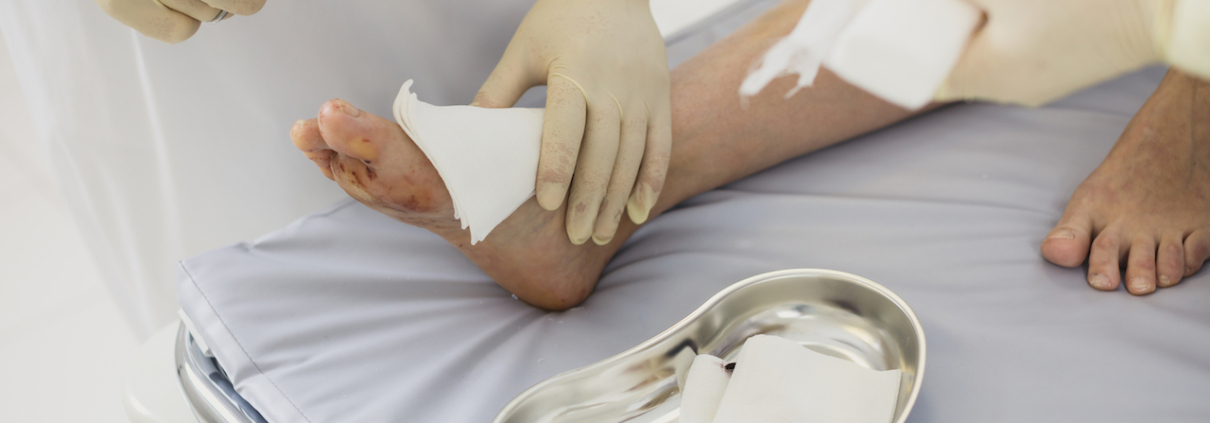Preventing Infections in Burns Patients
All patients are at risk from infection in hospitals and healthcare settings. But the risks are particularly high for burns patients.
High Infection Risk in Burns Patients
This is for three reasons:
- Burns patients invariably spend an extended period in the hospital. The longer any patient’s hospitalisation, the more frequently they’ll face common sources of nosocomial infections.
- Burns patients frequently undergo invasive procedures as part of their treatment.
- The nature of a burns patient’s injuries involves the loss of skin barrier protection against micro-organisms, and treatment often involves induced immunosuppression, which will only make them more vulnerable to infection.
So burns patients present a particular challenge for hospital staff.
In this post, we’ll explore some essential techniques and products that can help prevent infections in burns patients.
Standard Infection Control Precautions for Burns Patients
The Standard Infection Control Precautions (SICPs) are a set of practices that every member of staff in every healthcare setting must follow. They apply to every patient, every setting, every time.
For more information, you can read our full guide to SICPs. But a crucial consideration for burns patients is the first precaution: Patient placement, and assessing a patient’s infection risk.
Dedicated Burns Unit
The patient placement precaution involves placing patients in accordance with their clinical or care needs, while isolating patients who either have a high risk of infection, or who show a high risk of cross-infection.
It’s for this reason that hospitals should have dedicated burns units, where staff can take extra precautions to reduce the patients’ potential exposure to nosocomial infections.
Regular Hand Washing For Burns Patients
Hospital staff should wash their hands at five key points:
- Before you touch a patient.
- After you touch a patient.
- After you touch a patient’s immediate surroundings.
- Before you undertake any clean or antiseptic procedures.
- After any body fluid exposure risk.
There’s also a specific technique you should follow to wash your hands. For most healthcare settings, it should take at least 20 seconds. But in a burns unit, where the risks of infection are higher than elsewhere, staff may have to commit to an even more thorough hand hygiene regime.
PPE For Treating Burns Patients
Burns patients often lose their skin barrier protection against micro-organisms. So when treating burns patients, the correct PPE is vital. It can create an effective barrier against many common sources of infection, which can help ensure that the healthcare worker does not pass on an infection to the burns patient.
You’ll find a number of guides to effective PPE use on our site:
- Key factors to consider when selecting PPE.
- When and what type of PPE to use.
- How to put on and take off PPE in the correct order.
Infection Control for Burns Patients with Sterile Mats
Burns patients often have to undergo frequent invasive procedures as part of their treatment. Alongside numerous other infection control measures, absorbent mats can help you reduce the risks of infection while also cutting down on your turnaround time between procedures.
Our DryMax Sterile Mats can absorb up to 6 litres of water or 2.4 litres of saline. Place the DryMax Sterile Mat next to the patient and it’ll effectively help to capture all the various drips and spills created by the procedure.
Not only will this keep both the patient and the surgeon drier and more comfortable during the procedure, it will also contribute to infection prevention and control while reducing the risk of slips.
Then, after the procedure, you can simply dispose of the mat, allowing for more faster and effective cleaning between procedures. So as well as making your procedure cleaner and safer, it can also help make your unit as a whole run smoother and more efficiently.
It’s completely latex-free and you can use it flat, folded or rolled, depending on your needs.
Head here to learn more about how our DryMax Sterile Mats can help with infection control for burns patients.
Want to discuss your theatre’s fluid collection requirements? Call 0333 015 4345 or email info@cairntechnology.com.



